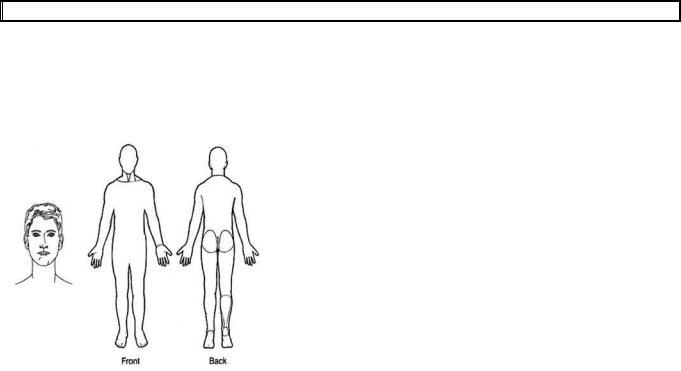In the fitness industry, there is a lot of talk about muscle tone and weight loss, but what about skin? Wrestling skin form is an essential part of the sport, but it often goes overlooked. In this blog post, we will discuss what wrestling skin form is and how you can improve yours. We'll also provide some tips on how to protect your skin from injuries. Read on to learn more!
| Question | Answer |
|---|---|
| Form Name | Wrestling Skin Form |
| Form Length | 1 pages |
| Fillable? | No |
| Fillable fields | 0 |
| Avg. time to fill out | 15 sec |
| Other names | skin form template, wrestling skin infection form, freddie mac form 1077, usa wrestling skin form 2021 |

Minnesota State High School League
WRESTLING SKIN CONDITION REPORT
PHYSICIAN RELEASE FOR WRESTLER TO PARTICIPATE WITH SKIN LESION
PRIVATE/CONFIDENTIAL DATA
Name:___________________________________________________________ Date of Exam:_____/_____/_____
Mark Location AND Number of Lesion(s)
Diagnosis:__________________________________________
__________________________________________________
Location AND Number of Lesion(s):____________________
_________________________________________________
Medication(s) used to treat lesion(s):____________________
_________________________________________________
Date Treatment Started:_____/_____/_____
Earliest date may return to participation:_____/_____/_____
Form Expiration Date:_____/_____/_____
Physician Signature:_____________________________________________________________________
Physician Name (Printed or Typed):_________________________________________Office Phone #:______________
(M.D. or D.O.)
Office Address:___________________________________________________________________________________
Note: To ensure medical instructions and MSHSL rules are being followed, this form should be faxed to the Activities Director at the student’s school.
Note to providers:
“ART. 3 . . . If a participant is suspected by the referee or coach of having a communicable skin disease or any other condition that makes participation appear inadvisable, the coach shall provide current written documentation as defined by the NFHS or the state associations, from a physician stating that the suspected disease or condition is not communicable and that the athlete’s participation would not be harmful to any opponent. This document shall be furnished at the
“ART. 4 . . . If an
Once a lesion is not considered contagious, it may be covered to allow participation.
Below are some treatment guidelines that suggest MINIMUM TREATMENT before return to wrestling:
Bacterial diseases (impetigo, boils): To be considered
Herpetic lesions (Simplex, Fever blisters/cold sores, Zoster, Gladiatorum): To be considered
Tinea Lesions (ringworm scalp, skin): Oral or topical treatment for 72 hours on all skin and 14 days on scalp.
Scabies, Head lice: 24 hours after appropriate topical management.
Conjunctivitis: 24 hours of topical or oral medication and no discharge.
Molluscum Contagiosum: 24 hours after curettage.
Parent Signature Required: _____________________________________________
Revised 1/21/2009